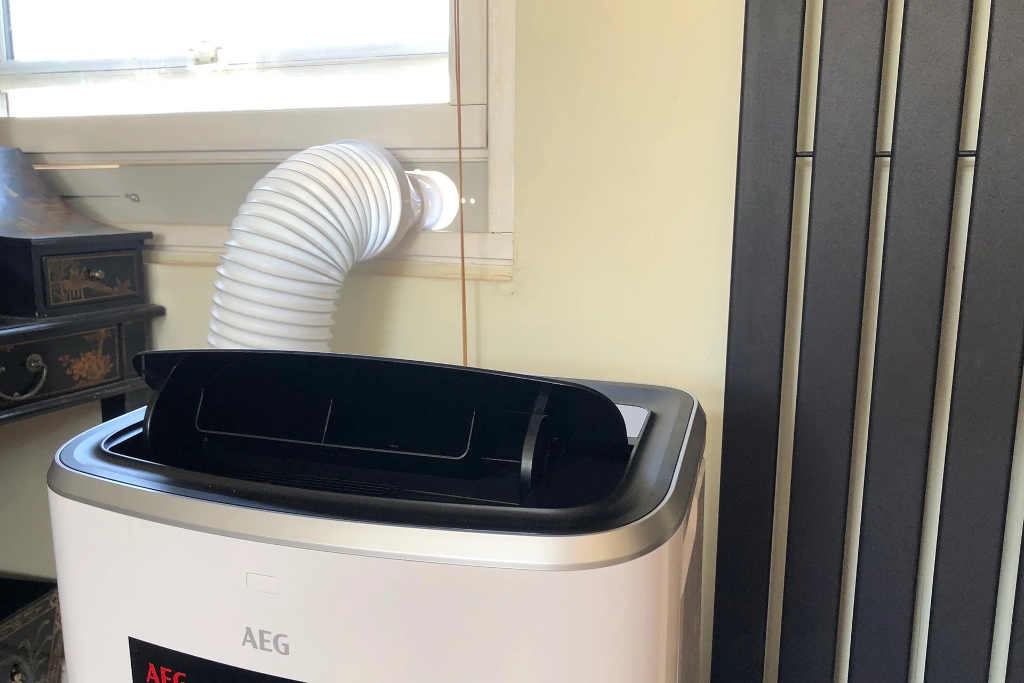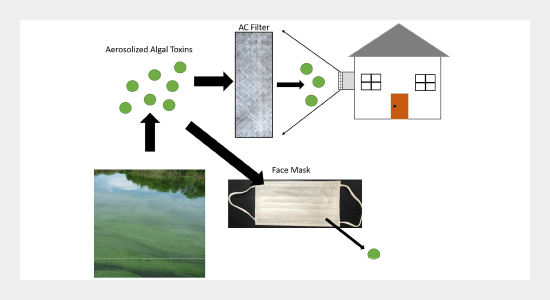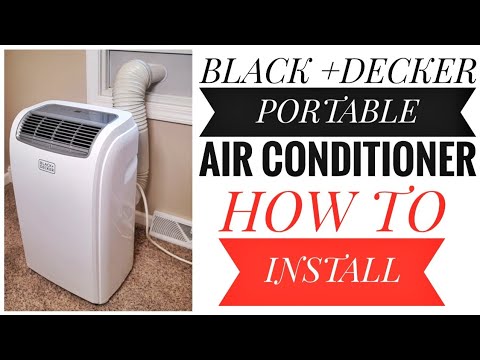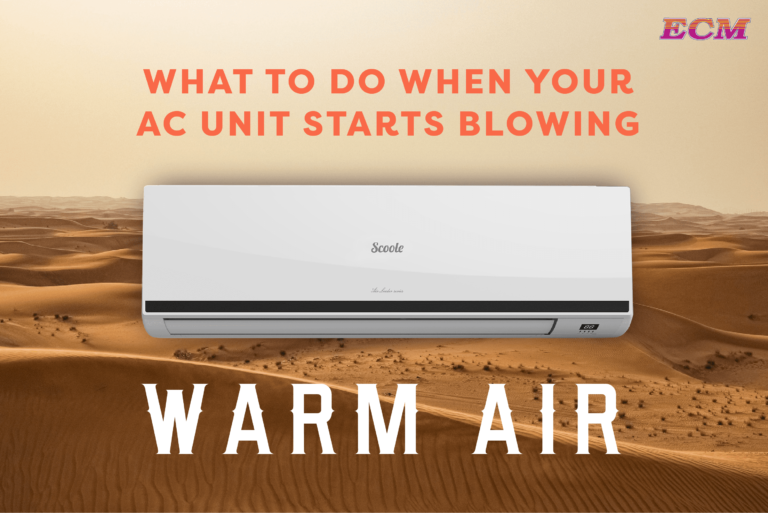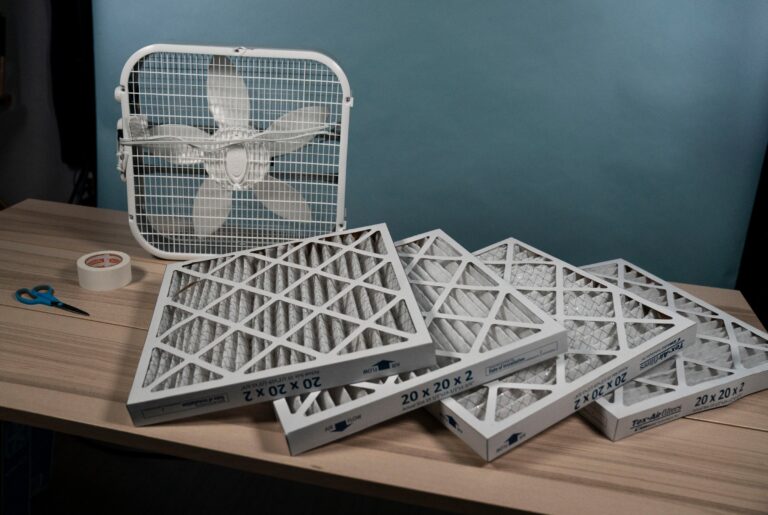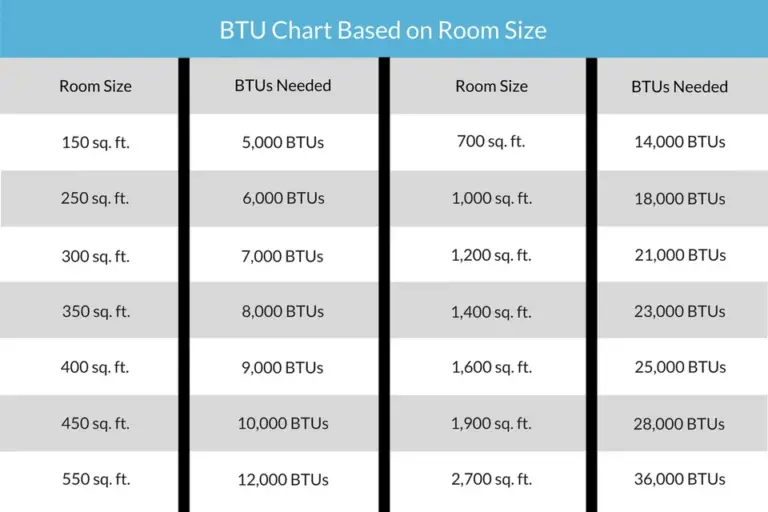Do I Have To Vent My Portable Air Conditioner? Essential Insights
Yes, you need to vent your portable air conditioner. Venting is essential for proper operation and efficiency.
Portable air conditioners work by removing heat from the air inside your room and releasing it outside. Without venting, the hot air would recirculate back into the room, making the cooling process ineffective. Typically, venting is done through a window using a hose that comes with the unit.
Proper venting ensures that the unit functions efficiently and maintains a comfortable indoor environment. Always follow the manufacturer’s instructions for venting to optimize performance and energy efficiency. Skipping the venting process can lead to increased energy consumption and decreased cooling capacity, making your portable air conditioner less effective.
Introduction To Portable Air Conditioners
Portable air conditioners are a great way to cool down any room. They are easy to move and do not need permanent installation. This makes them ideal for renters and homeowners alike. Let’s dive into what they are and how they work.
What They Are
Portable air conditioners are compact units that cool specific areas. Unlike traditional units, they do not require a window or wall hole. You can place them in any room with an electrical outlet. Many units come with wheels, making them easy to move. They are perfect for small apartments, offices, or bedrooms.
How They Work
Portable air conditioners work by pulling in warm air from the room. They use a refrigerant to cool the air. The unit then blows the cooled air back into the room. They also have a hose that expels hot air outside. This hose must be vented through a window or door.
Here is a simple breakdown of their process:
- Warm air is drawn into the unit.
- The air is cooled using a refrigerant.
- The cooled air is released back into the room.
- Hot air is expelled through a vent hose.
Some units also dehumidify the air, making your room more comfortable. These units have a water tank that collects excess moisture. You need to empty the tank periodically.
It’s important to know that the venting process is crucial. Without proper venting, the unit cannot cool effectively. Always make sure the vent hose is correctly installed.
Importance Of Venting
Venting your portable air conditioner is crucial. It removes hot air from your room. Without venting, the unit can’t cool effectively. Let’s explore why venting matters.
Heat Removal
Portable air conditioners pull warm air from your room. They cool the air and release it back. The hot air needs to go somewhere. Venting sends hot air outside. This keeps your room cool.
Efficiency Boost
Venting boosts the unit’s efficiency. It doesn’t have to work as hard. This uses less energy. Your room cools faster. Venting helps the unit last longer.
Common Venting Methods
Portable air conditioners need proper venting to expel hot air outside. Venting prevents overheating and ensures efficient cooling. Below are common venting methods for portable air conditioners.
Window Venting
Window venting is the most popular method. It’s straightforward and efficient. Here’s how to do it:
- Place the unit near a window.
- Use the included vent kit.
- Attach the exhaust hose to the air conditioner.
- Extend the hose to the window.
- Secure the window kit in place.
This method is ideal for most homes. It doesn’t require special tools or skills.
Sliding Door Venting
Sliding door venting is another option. This method works well for large areas. Follow these steps:
- Position the unit near a sliding door.
- Use a sliding door vent kit.
- Connect the exhaust hose to the air conditioner.
- Extend the hose to the sliding door.
- Secure the vent kit in the door track.
This method is great for rooms without windows. It provides flexibility in venting options.
| Venting Method | Best For | Tools Needed |
|---|---|---|
| Window Venting | Most homes | Vent kit |
| Sliding Door Venting | Large areas | Sliding door kit |
Choosing the right venting method is essential. It ensures your air conditioner works effectively. Make sure to follow the steps carefully for each method.
Alternative Venting Options
Portable air conditioners need venting to work efficiently. Standard venting often uses windows, but there are alternative venting options available. These alternatives can be useful if window venting is not possible. Below, we explore two effective methods: Drop Ceiling Venting and Through-the-Wall Venting.
Drop Ceiling Venting
Drop ceilings are common in offices and basements. They provide a good venting option for portable air conditioners. Here’s how you can do it:
- Remove a ceiling tile near the unit.
- Install a vent kit in the space.
- Connect the exhaust hose to the vent kit.
This method is discreet and keeps your space tidy. It’s perfect for rooms with limited window access. The ceiling tiles hide the vent system, maintaining the room’s aesthetics.
Through-the-wall Venting
Through-the-wall venting offers a permanent solution. It’s ideal for long-term installations. Follow these steps:
- Choose a spot on the wall.
- Cut a hole matching the vent size.
- Install the vent and seal it properly.
- Attach the exhaust hose to the vent.
This method ensures efficient heat expulsion. It doesn’t block windows and keeps your living space comfortable. Make sure to seal the vent tightly to prevent air leaks.
| Venting Option | Best For | Pros | Cons |
|---|---|---|---|
| Drop Ceiling Venting | Offices, Basements | Discreet, Easy to Install | Requires Drop Ceiling |
| Through-the-Wall Venting | Permanent Installations | Efficient, No Window Blockage | Requires Wall Cutting |
Both methods offer unique benefits. Choose the one that best fits your space and needs. Proper venting ensures your portable air conditioner runs efficiently.
Consequences Of Not Venting
Using a portable air conditioner without proper venting can lead to various issues. Venting is crucial for your air conditioner’s performance and longevity. Let’s explore the consequences of not venting your portable air conditioner.
Decreased Performance
A portable air conditioner needs to expel hot air. Without venting, hot air stays inside the room. This reduces the cooling effect.
The machine will work harder to cool the space. This leads to increased energy consumption. Higher energy bills follow.
Proper venting ensures efficient cooling. Without it, the air conditioner’s performance drops significantly.
Potential Damage
Not venting your air conditioner can cause damage. The unit may overheat.
Overheating can damage internal components. This shortens the lifespan of your air conditioner.
Water buildup is another issue. Without venting, moisture accumulates inside the unit. This can lead to mold growth.
Mold can damage the air conditioner. It also poses health risks. Therefore, proper venting is essential for maintaining your air conditioner.
| Issue | Impact |
|---|---|
| Overheating | Damage to internal components |
| Increased Energy Use | Higher electricity bills |
| Moisture Buildup | Mold growth |
| Reduced Cooling | Lower performance |
Ensuring proper venting helps avoid these problems. Your portable air conditioner will run efficiently. It will also last longer.
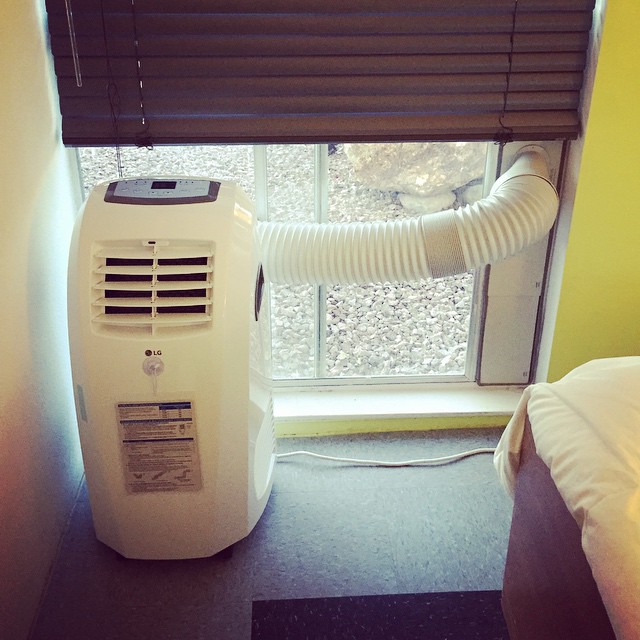
Credit: americanhomewater.com
Choosing The Right Venting Kit
Choosing the right venting kit is crucial for your portable air conditioner. It ensures proper airflow and optimal cooling efficiency. This guide covers the types of kits available and provides installation tips.
Types Of Kits
There are several types of venting kits you can choose from. Each type suits different needs and preferences.
- Window Kits: These are the most common kits. They are easy to install and fit most windows.
- Sliding Door Kits: Ideal for sliding doors. They come with adjustable panels.
- Wall Kits: Perfect for permanent setups. They require drilling a hole in the wall.
- Ceiling Kits: Suitable for rooms with drop ceilings. They require a bit more effort to install.
Installation Tips
Follow these tips to install your venting kit correctly.
- Read the Manual: Always read the manufacturer’s instructions first.
- Measure Carefully: Ensure the kit fits your window or door perfectly.
- Seal Gaps: Use foam seals to prevent air leaks.
- Secure the Hose: Attach the vent hose firmly to avoid disconnections.
- Test the Setup: Turn on the unit to check for any issues.
Having the right venting kit makes your portable air conditioner more efficient. Follow these tips for a smooth installation.
Portable Air Conditioners Without Venting
Many wonder if portable air conditioners need venting. Some models don’t. These are called portable air conditioners without venting. Let’s explore the options.
Evaporative Coolers
Evaporative coolers use water to cool the air. They don’t need a vent. These units are great for dry climates. They add moisture to the air. This makes them ideal for places with low humidity.
Evaporative coolers are also energy-efficient. They use less power than traditional air conditioners. These units are easy to move. They often come with wheels. They are also simple to maintain.
Dual-hose Models
Dual-hose models are another option. These units have two hoses. One hose brings in air from outside. The other hose expels hot air. This makes them more efficient.
Dual-hose models cool rooms faster. They also do not create negative pressure. This means they don’t pull in hot air from other rooms. These units are ideal for larger spaces.
| Feature | Evaporative Coolers | Dual-Hose Models |
|---|---|---|
| Energy Efficiency | High | Moderate |
| Portability | Very Portable | Less Portable |
| Best for Climate | Dry | All Climates |
Choosing the right portable air conditioner depends on your needs. Consider climate, room size, and energy efficiency.
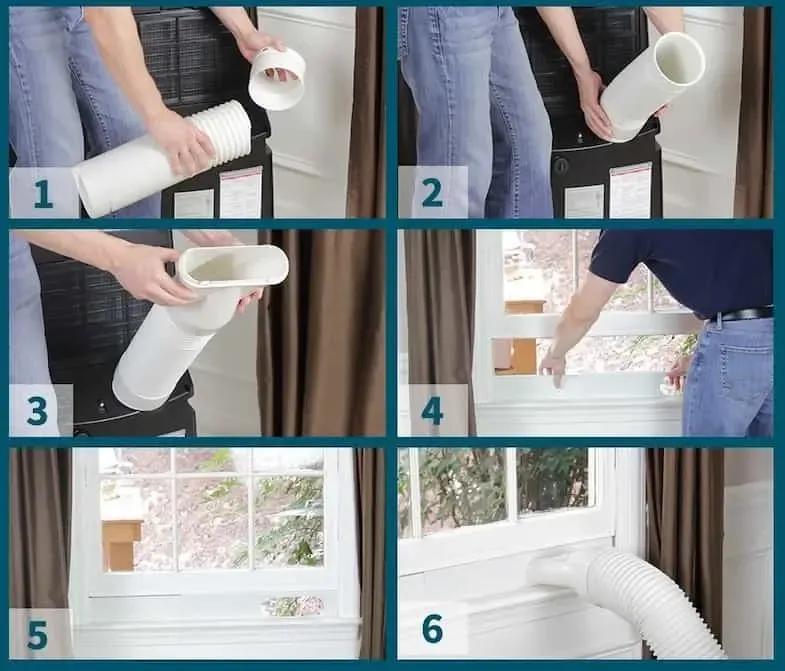
Credit: www.sylvane.com
Maintenance Tips For Optimal Performance
Maintaining your portable air conditioner ensures it works efficiently. Regular care can extend its life and keep your home cool.
Regular Cleaning
Regular cleaning is essential for your portable AC. Dust and dirt can clog the filters and reduce performance. Clean the filters every two weeks. Use a vacuum or rinse with water. Let them dry completely before reinserting.
Wipe down the exterior with a damp cloth. This removes dust and keeps it looking new. Check the vents for any blockages. Clear them if needed. A clean unit runs better and cools faster.
Proper Storage
Proper storage is key during the off-season. Drain any water from the unit. This prevents mold and mildew. Clean the filters and let them dry. Store the AC in a cool, dry place.
Cover the unit with a cloth or plastic sheet. This keeps dust away. Ensure all parts are secure. Check for any damage before storing. Proper storage extends the life of your portable air conditioner.

Credit: precisionairrental.com.au
Frequently Asked Questions
What Happens If You Don’t Vent A Portable Air Conditioner?
Not venting a portable air conditioner causes inefficient cooling. The unit recirculates warm air, increasing room temperature and energy usage.
Can I Use A Portable Air Conditioner In A Room Without A Window?
Yes, you can use a portable air conditioner without a window. You need to vent it through a door, wall, or ceiling.
Do Portable Air Conditioners Have To Be Vented Out A Window?
Yes, portable air conditioners need to be vented out a window. Venting removes hot air and ensures efficiency. Some models offer alternative venting options like sliding doors or drop ceilings.
Conclusion
Venting your portable air conditioner is essential for efficient cooling. It removes hot air from your space. Proper ventilation ensures better performance and prolongs the unit’s life. Always follow the manufacturer’s instructions for optimal results. Enjoy a comfortable and cool environment by venting your portable air conditioner correctly.

